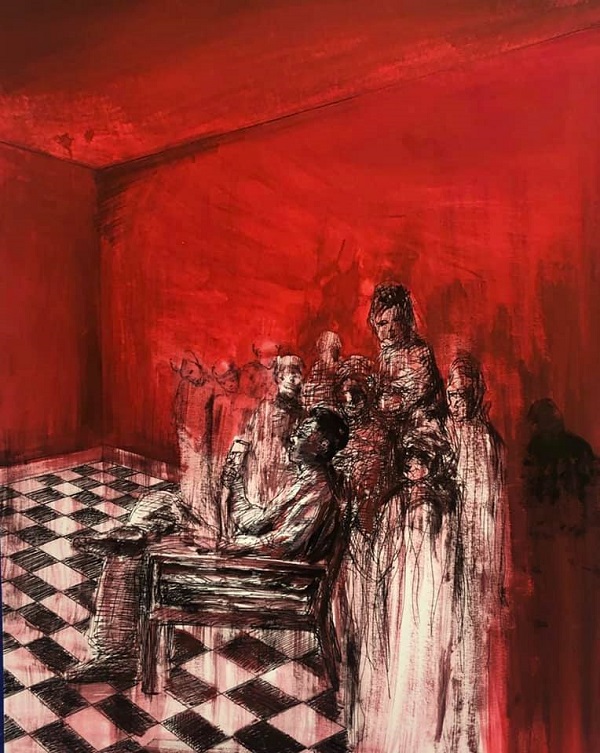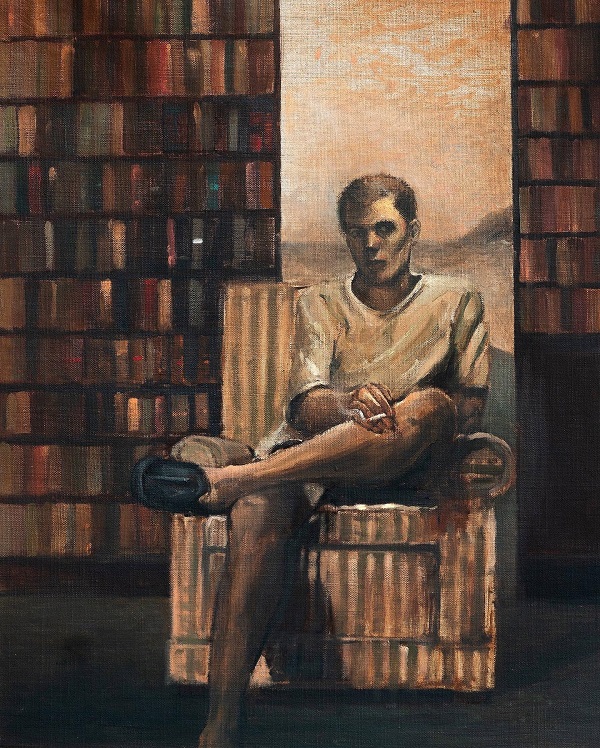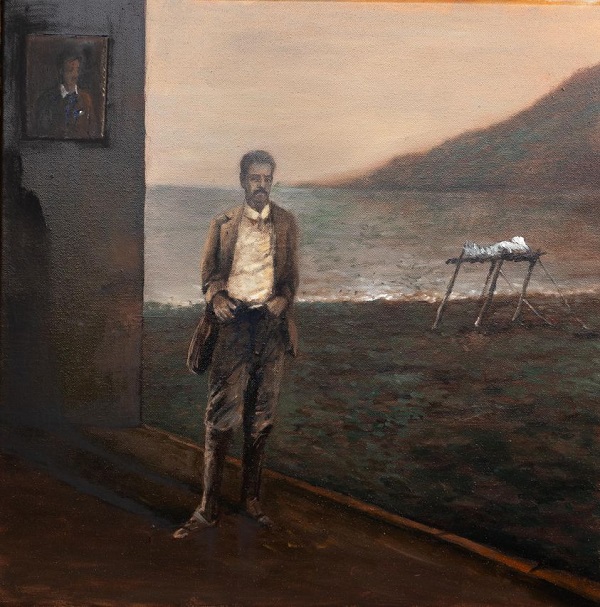
Written by: Bilal Mustikhan
Posted on: June 27, 2022 |  | 中文
| 中文
Zaam Arif's painting, titled 'Muscle', published in The New Yorker
Zaam Arif is a contemporary American-Pakistani artist who dons many hats: from filmmaking to music to fine arts to his love for physics, there is hardly anything that he has not touched.
He exhibited his art work in Italy recently; it was one artwork that was divided into three paintings, a triptych. The images were of his sister, father and himself. He has always been fond of human representations and had been fortunate enough to focus his art around human identity. However, Zaam’s journey into art has been turbulent. Even though he is from a family of artists, most of his life was spent trying to carve out a different journey for himself. However, you can only run so far from your natural calling.
Zaam Arif is an American-Pakistani contemporary artist residing and working in Houston, Texas. He is the youngest Pakistani artist whose paintings featured in The New Yorker. His work was selected for the Malamegi Lab Award in 2021 and they awarded him the Malamegi Lab Research Grant in Italy. A successful exhibition of Zaam’s works titled ‘Being and Becoming’ was held at Tanzara Gallery in Feb 2022.
Zaam explores existentialist experiences of the layman, the experiences that we tend to hide. He confronts it with a penetrating interpretation of human nature, transforming it into a visceral reality. His work is a manifestation of his understanding of the contemporary human condition along with insights garnered from his study of classical literature and psychology. He is adamant in exploring the harsher truths and inner conflicts that plague us all in this day and age, using visual contrast in all his pieces, whether through color, lack thereof, or the medium itself, to express it.
Youlin Magazine had the honor of interviewing this young artist to discuss his early life, inspirations and experience at the infamous Indus Valley School of Art and Architecture.
Both my parents are artists. When I was younger, I did not want to become an artist because of the fear of being compared to my parents. In fact, it was the last thing I would have wanted to become. Call it childhood rebellion, as I desperately wanted to do something different from my parents.
Even though I was into physics and mathematics from a young age, I would scribble, draw, and doodle at the back of my notebooks since an early age. However, I never showed my scribbles to anyone or told anyone that this is what I do in my spare time. Mostly, I would take an eraser and remove all traces of my drawings. It was almost as if I was hiding from myself. However, I ran out of places to hide. Eventually, I realized that even though my love for physics would always stay with me, and my interest in filmmaking would not end, art was in my blood.
When I came back from the US to Pakistan, I decided to join the Indus Valley School of Art and Architecture, and even though I wanted to study Communication and Design, the entry test required one to draw. However, despite my spare time doodles, I was terrible at drawing.
I could learn from my father but I only saw him as a parental figure, not as an artist or my teacher. I needed someone to tell me what to do and guide me through the steps of how to do it. So, I decided to go to Sir Mohandas, a Hyderabad-based artist and art teacher, who helped me immensely in improving my art. When I gave my test. I fared well and got admission in one of the best art schools in Karachi. Honestly, practice and consistency became my best friends.
I mentioned that I would scribble a lot at the back of my notebooks. My scribbles or doodles did not make much sense but I loved making them. Soon, I came across Picasso and his work that revolved around abstract art. Now, I don’t mean to sound cliched but he changed my life. His art is beautiful and had a great impact on me.
I like Picasso so much because he broke away from conventional art. He paved a way for future artists so that we could understand the idea that art does not have to be the same for everyone, it is up to you to decide what you want to do. Coming from a place like Pakistan and being told that there are no rules, is extremely enticing, even in art. I felt like Picasso’s journey was the opposite of mine, as he became a child prodigy at 12 and by the age of 14, was painting at university level. However, I ran away from my calling when I was 12, and by the time I entered university, my art started to become popular.
Another artist whom I absolutely worship is Francis Bacon. A lot of my work is influenced by philosophy and questioning things. Even as a young child, I would never accept what I was told, and would question everything. Bacon’s art inspired me and allowed to make paintings that were often representations of my daily life. I also really like Fyodor Dostoevsky’s work, as his fictional work focuses on the human psyche and self, and that is something my art also revolves around.
I have a very fond memory of the first painting I sold. I was 21 years old and had been uploading my work on Instagram, you know how social media has become the best medium for young artists. I posted a scribble of a woman and within a few hours, a man from Quetta had messaged me to ask if I could sell him my painting. He asked what I was charging for it and I was so confused as I had no idea. I went up to my Dad and asked him what I should charge. However, he told me to make a decision on my own. Baffled and overwhelmed, I asked this kind stranger what he would pay for the painting and he quoted Rs. 5000. At that point, I didn’t care about the money. I got the painting framed, packed, and shipped to him. Even though the entire process cost me more, I was just happy that my work was worth becoming part of someone’s home, or that someone might get appreciate my painting. That meant the world to me.
In the words of Zaam Arif, “the roots of fear are more troublesome than the fear itself.” He advises the emerging artists to take a fair share of time to figure out what they want to do in life, rather than being sucked into capitalistic mindsets and ideologies. Zaam Arif’s next exhibition is in Oct 2022.



You may also like: